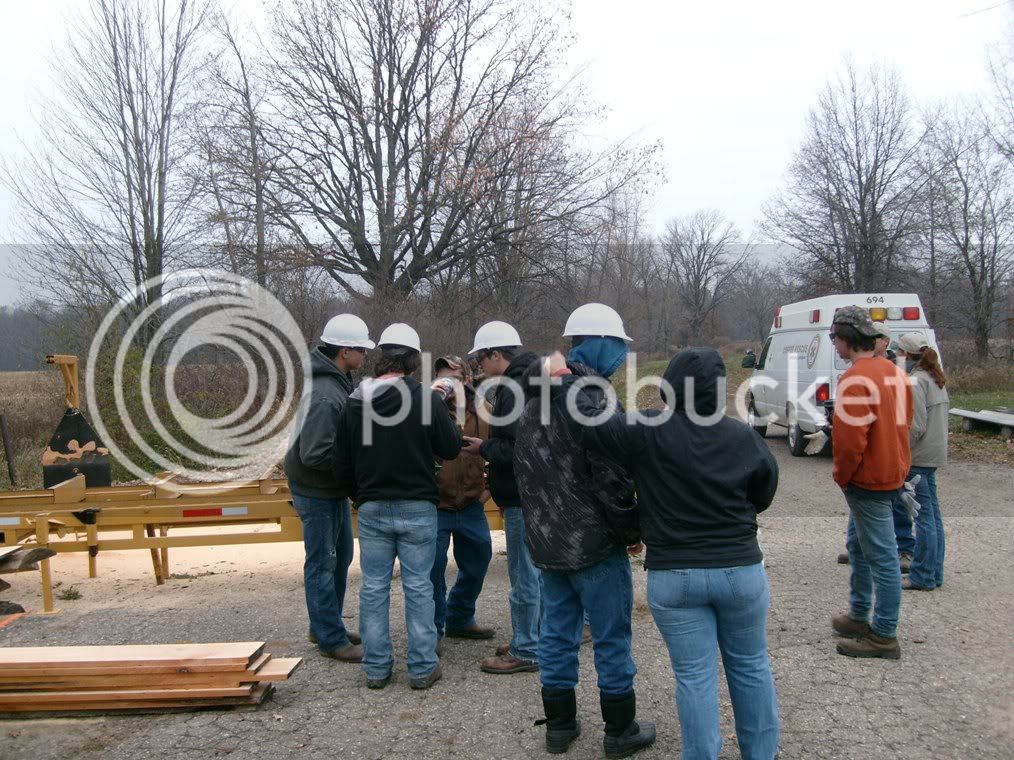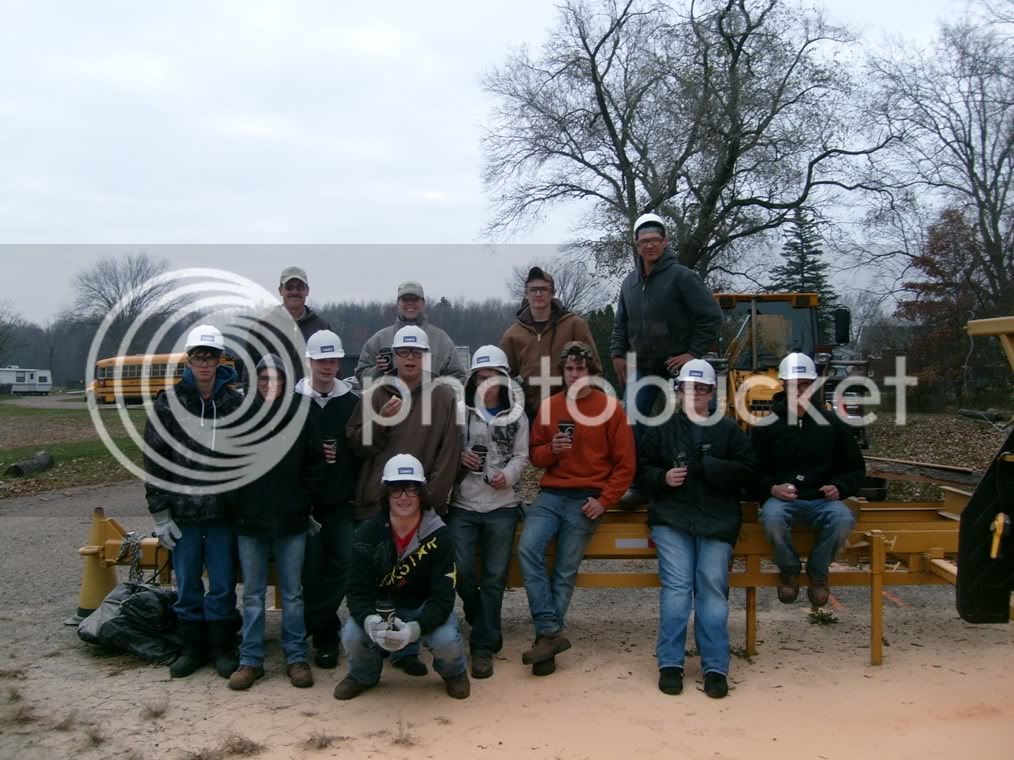chaikwa
ArboristSite Operative
This is a program I've been running here at our tree farm for the local high school shop class. Out of more than 10 high schools within a 20 mile radius, this is the only one that still HAS a shop program due to decreasing budgets and disinterested students. This particular school realizes that not every kid is going to go to college and have developed programs that will hopefully give them an idea of what's out there for career opportunities. Today's class was by far the most enthusiastic group I've had in the 4 years of the program's existence. They were still asking questions and wanting to do more as their shop class instructor was attempting to herd them back into the bus!
Mr 'D', the shop class Instructor, Shawna Meyer, Michigan DNR & Jeff Steinkraus, Forester/Instructor-Steinkraus Forest Management address the class from Climax-Scotts High School Shop class before entering the woodlot. There's a lot for them to absorb in the short 3 hours we're together, but safety in the woodlot is at the top of the list.
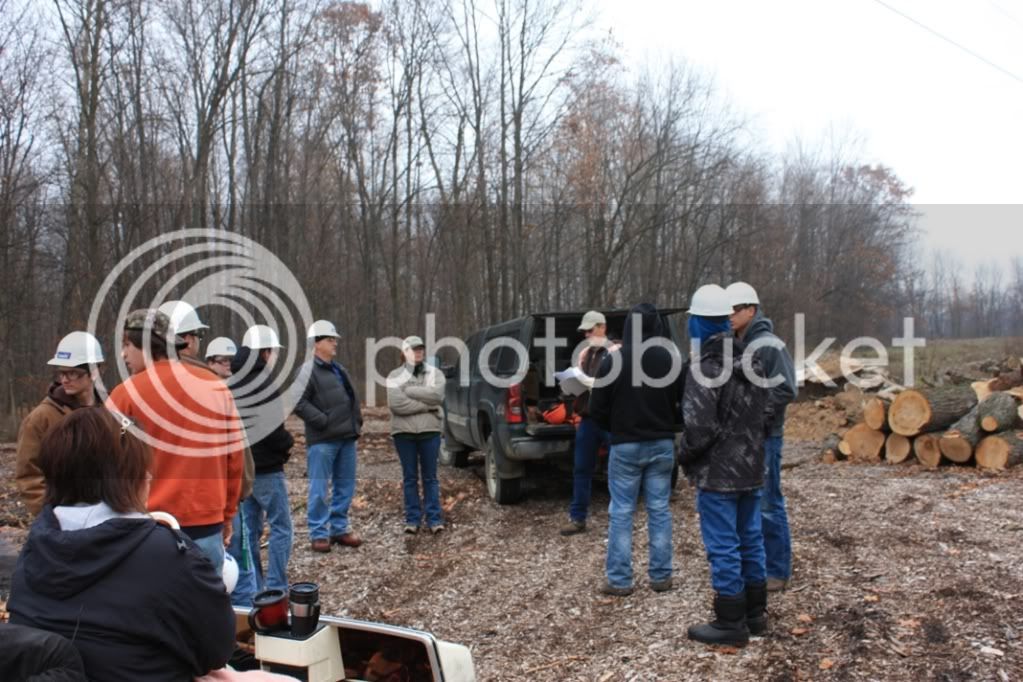
Forester/Instructor Jeff Steinkraus of Steinkraus Forest Management directs a student from Climax-Scotts High School Shop class in learning one method of determining the diameter of a Cottonwood tree.
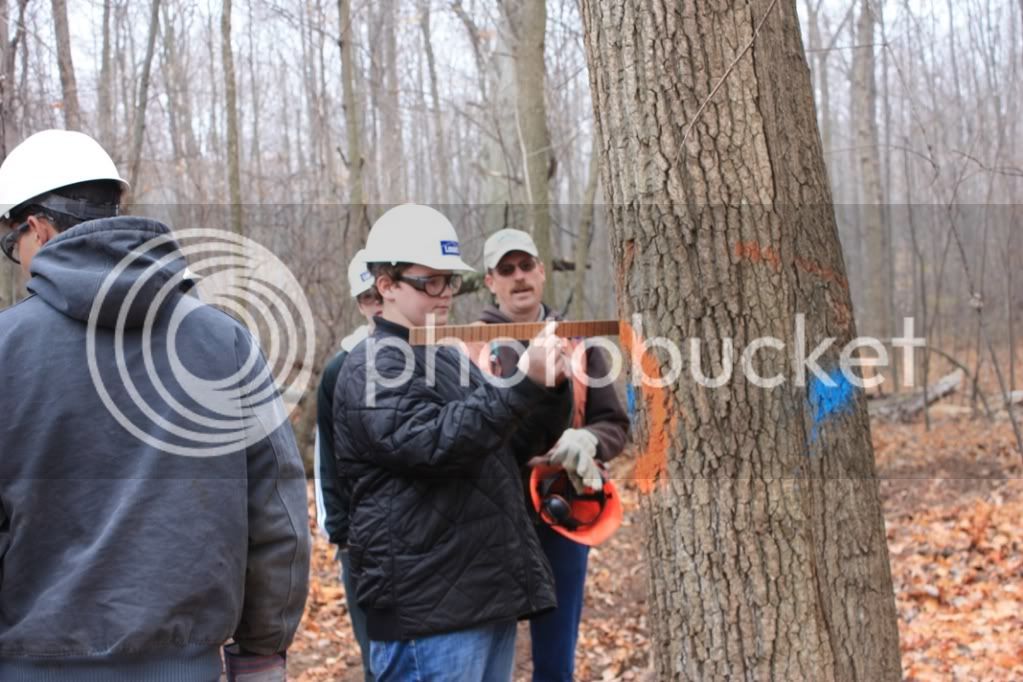
Another student from the Climax-Scotts High School Shop class learns an alternative method for determining the diameter of a Cottonwood tree. Math is a big part of the forestry and wood products industry, and through these exercises they discover first hand the practical applications of what they learn in the classroom. I was always horrible with math when I was in school because I could never see where I'd use it in real life. Hopefully this opens their eyes a little in regards to that aspect.
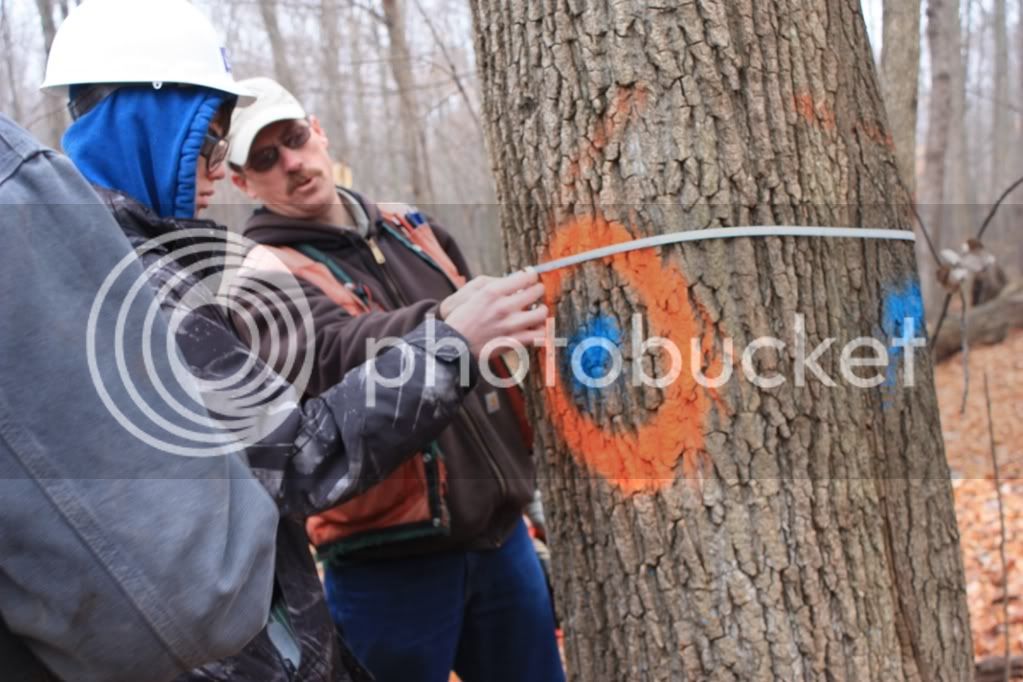
Students from Climax-Scotts High School Shop class learn how to determine the height of a tree in order to estimate the amount of lumber it may yield. Math application again!
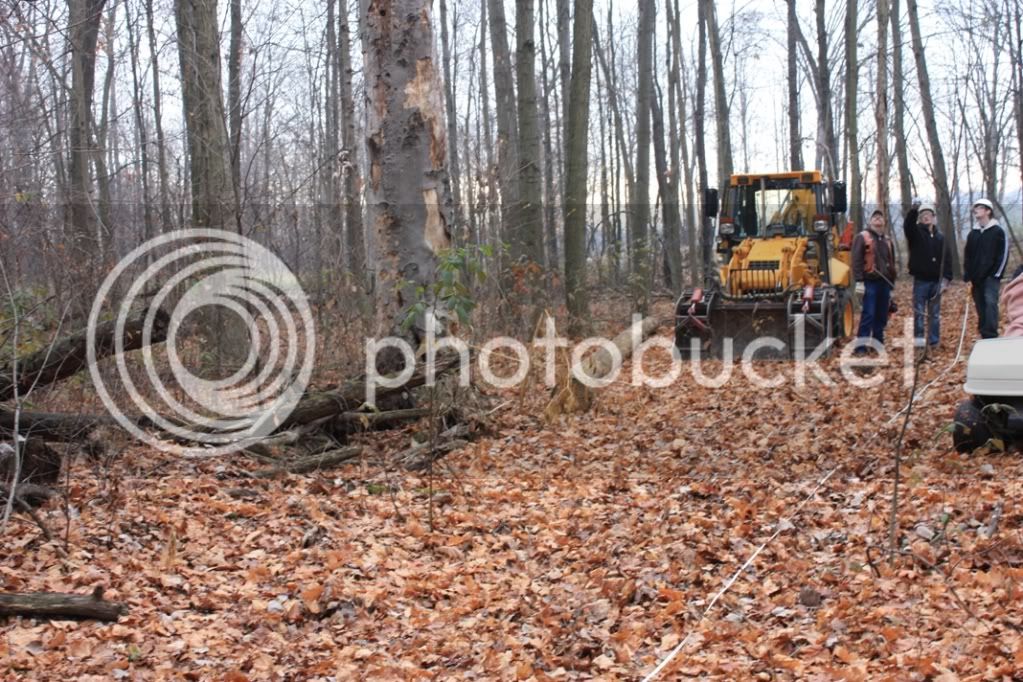
Jeff Steinkraus instructs students from Climax-Scotts High School Shop class how to use a Biltmore stick to calculate board footage from a log. I don't need to say it, but I will anyway; there's that math again.
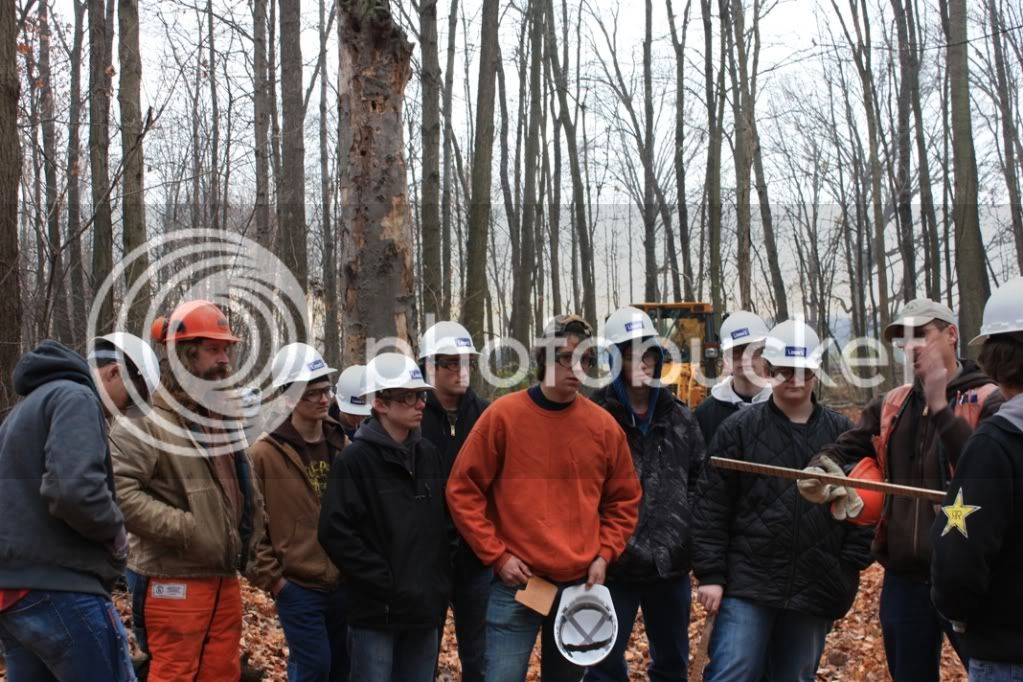
A student from Climax-Scotts High School Shop class runs the sawmill to make 1-1/8" thick black cherry boards. A 20 minute safety speech along with gloves, eye protection and hardhats donated by Lowe's punctuate the message that safety is the first and foremost priority.
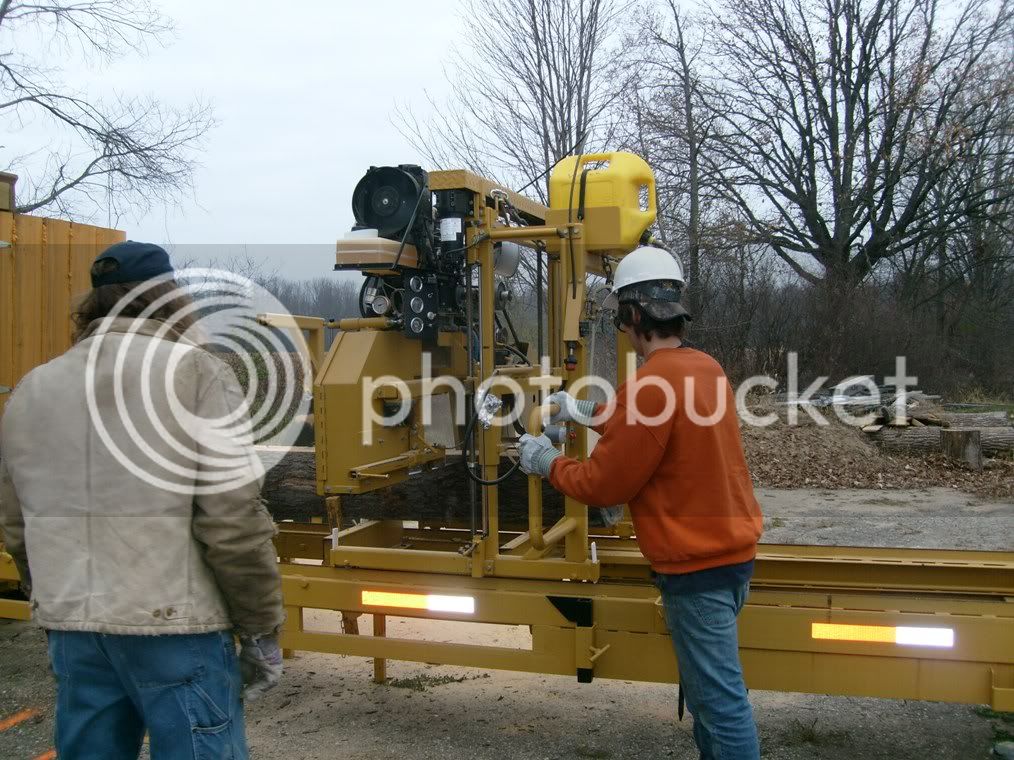
Students turn the log after making the first cut with the sawmill. Enthusiasm and participation was high with these students!
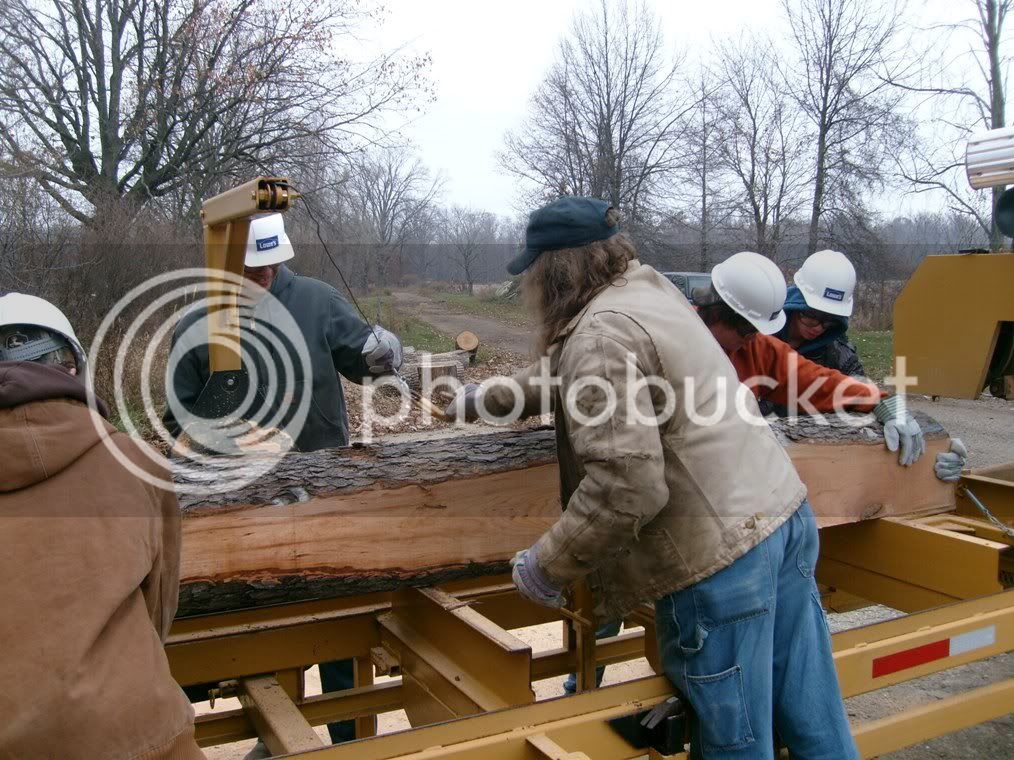
After the raw log is sawn on 4 sides to make a square 'cant', another student from the Climax-Scotts High School Shop class takes his turn at the sawmill.
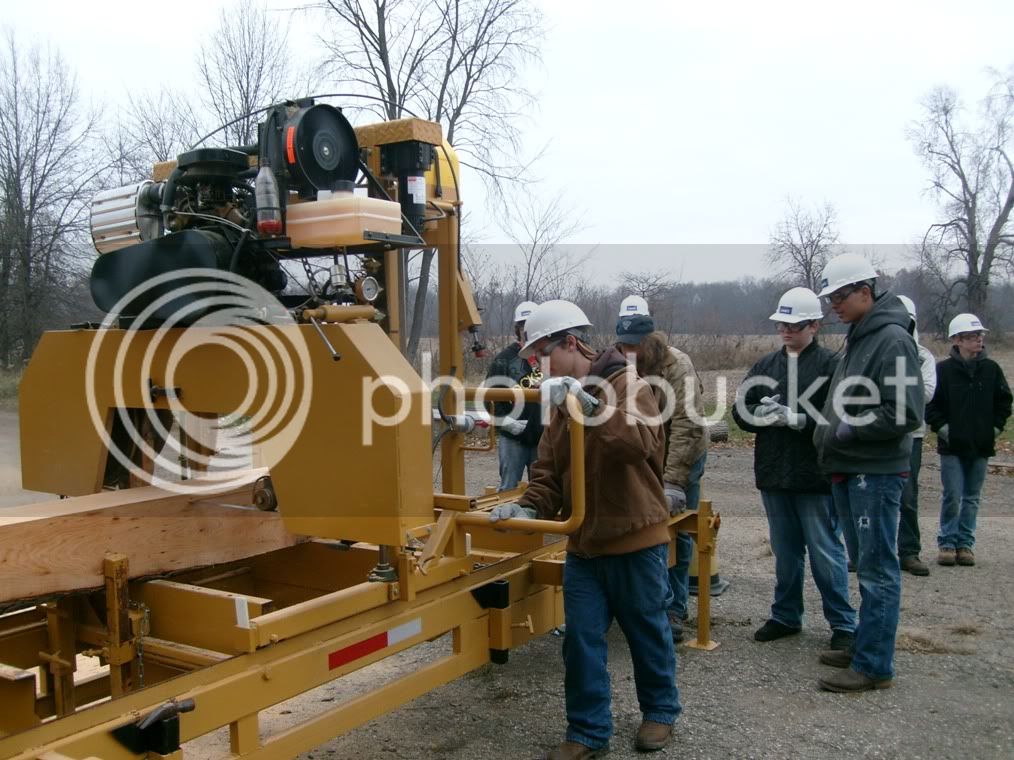
Mr 'D', the shop class Instructor, Shawna Meyer, Michigan DNR & Jeff Steinkraus, Forester/Instructor-Steinkraus Forest Management address the class from Climax-Scotts High School Shop class before entering the woodlot. There's a lot for them to absorb in the short 3 hours we're together, but safety in the woodlot is at the top of the list.

Forester/Instructor Jeff Steinkraus of Steinkraus Forest Management directs a student from Climax-Scotts High School Shop class in learning one method of determining the diameter of a Cottonwood tree.

Another student from the Climax-Scotts High School Shop class learns an alternative method for determining the diameter of a Cottonwood tree. Math is a big part of the forestry and wood products industry, and through these exercises they discover first hand the practical applications of what they learn in the classroom. I was always horrible with math when I was in school because I could never see where I'd use it in real life. Hopefully this opens their eyes a little in regards to that aspect.

Students from Climax-Scotts High School Shop class learn how to determine the height of a tree in order to estimate the amount of lumber it may yield. Math application again!

Jeff Steinkraus instructs students from Climax-Scotts High School Shop class how to use a Biltmore stick to calculate board footage from a log. I don't need to say it, but I will anyway; there's that math again.

A student from Climax-Scotts High School Shop class runs the sawmill to make 1-1/8" thick black cherry boards. A 20 minute safety speech along with gloves, eye protection and hardhats donated by Lowe's punctuate the message that safety is the first and foremost priority.

Students turn the log after making the first cut with the sawmill. Enthusiasm and participation was high with these students!

After the raw log is sawn on 4 sides to make a square 'cant', another student from the Climax-Scotts High School Shop class takes his turn at the sawmill.






